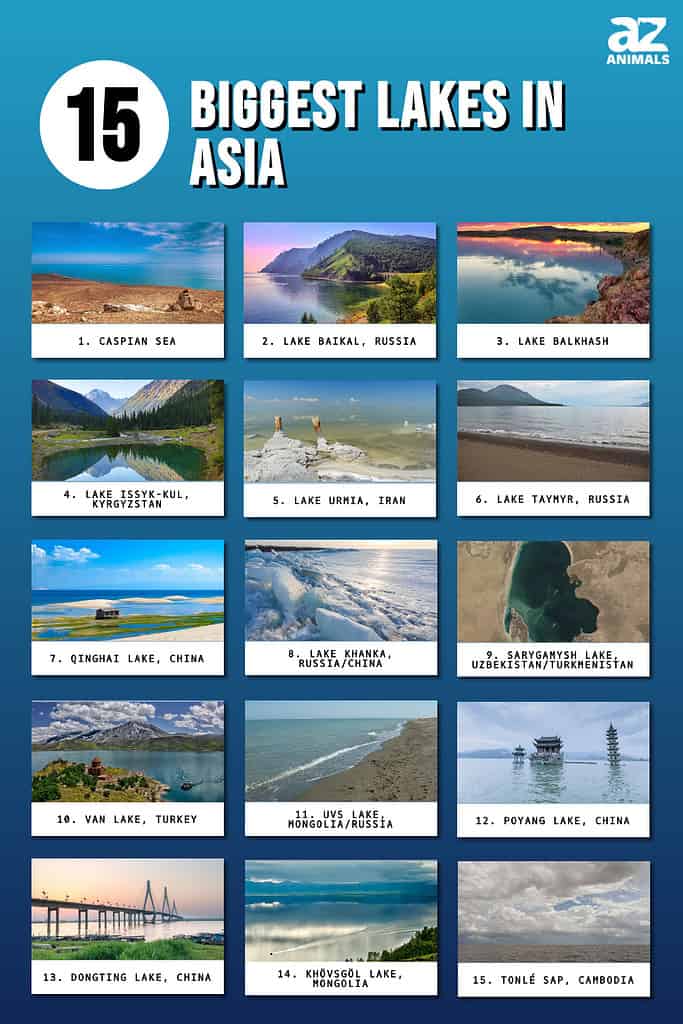
Asia is both the largest and most populated continent, with 4.5 billion people. It’s not surprising that the Asian continent has a wide range of climatic conditions and various geophysical markers, such as lakes, given its vast size. The continent also has many lakes with multiple origins, shapes, and sizes. In fact, Asia is home to the world’s largest lake. Lakes in Asia have usually been formed in craters and calderas in the volcanic zones of eastern Asian islands such as the Philippines and the Malay Archipelago. This article will discuss the 15 biggest lakes in Asia and where to find them.
The 15 Biggest Lakes in Asia
15. Tonlé Sap, Cambodia
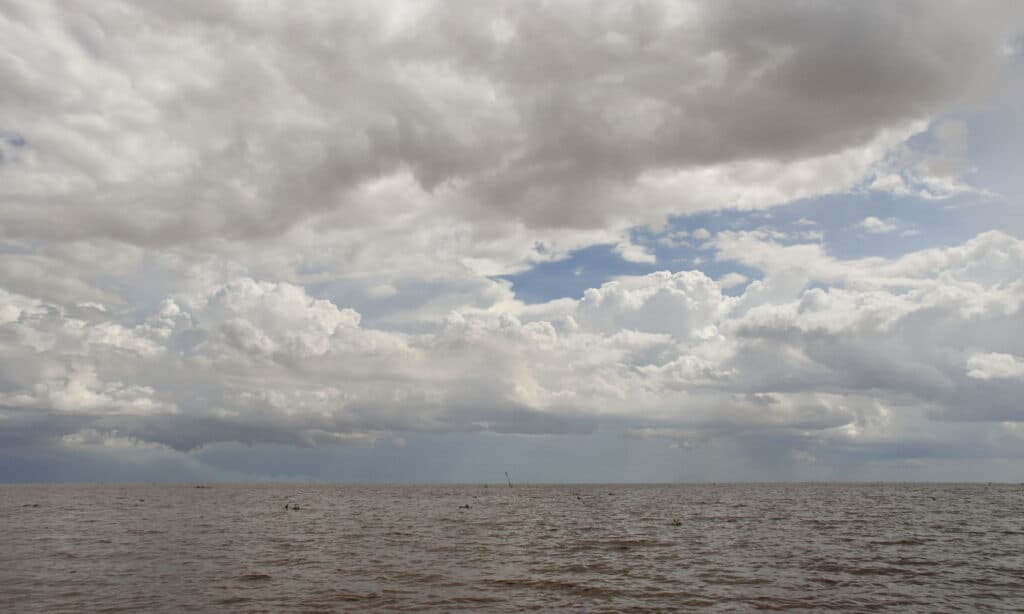
Located in the northwest of Cambodia, Tonle Sap is the largest freshwater lake in Southeast Asia.
©iStock.com/Anne Czichos
Tonlé Sap, sometimes known as the ‘Great Lake,’ is a massive lake in Cambodia‘s northwest. It is Southeast Asia’s largest freshwater lake and one of the world’s most diverse and abundant ecosystems. The lake typically has a surface size of 1,000 square miles (2,700 square kilometers). There are at least 149 varieties of fish in the lake and waterfowl such as spotted-billed pelicans, great bald storks, black-bellied pelicans, Bengal bustards, and gray-headed fishing eagles, as well as reptiles such as the endangered Siamese crocodile and several freshwater snakes.
14. Khövsgöl Lake, Mongolia
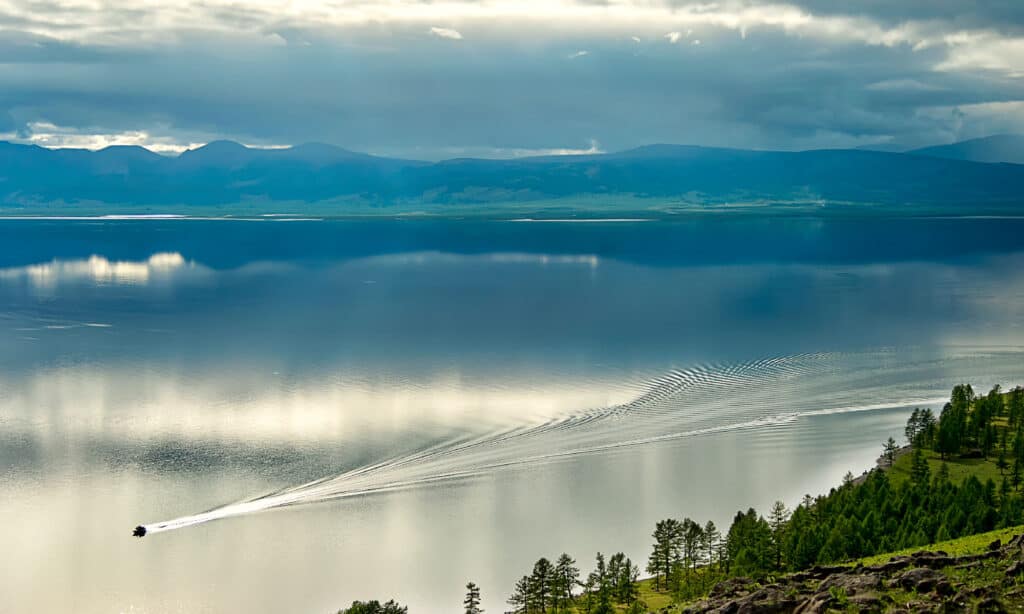
Covering an area of 1,070 square miles, Lake Khövsgöl is the biggest lake in Mongolia by volume.
©iStock.com/annie_zhak
Lake Khövsgöl is Mongolia‘s second-largest freshwater lake by area and the largest by volume. It has a maximum depth of 876 feet and covers an area of 1,070 square miles (2,760 square kilometers). The lake is home to 10 distinct fish species and 44 water plants. Around the lake, there are 291 species of birds, 258 of which are migratory. Some of the most well-known birds include the Baikal teal, the bar-headed geese, the black stork, and the Altai snowcock.
13. Dongting Lake, China

During flood seasons, Dongting Lake can expand to a surface area of 7,700 square meters.
©iStock.com/chuyu
Dongting Lake, a massive yet shallow lake in northern Hunan province, south-central China, boasts a surface area of 1,090 sq mi (2,820 km2), making it one of Asia’s largest lakes. The lake can expand to a surface area of 7,700 sq mi during flood seasons. Junshan Island, located in the lake, is known for the finless porpoise, an endangered species. The lake used to be much larger 150 years ago, but fast sedimentation and land reclamation projects have subsequently decreased its area.
12. Poyang Lake, China
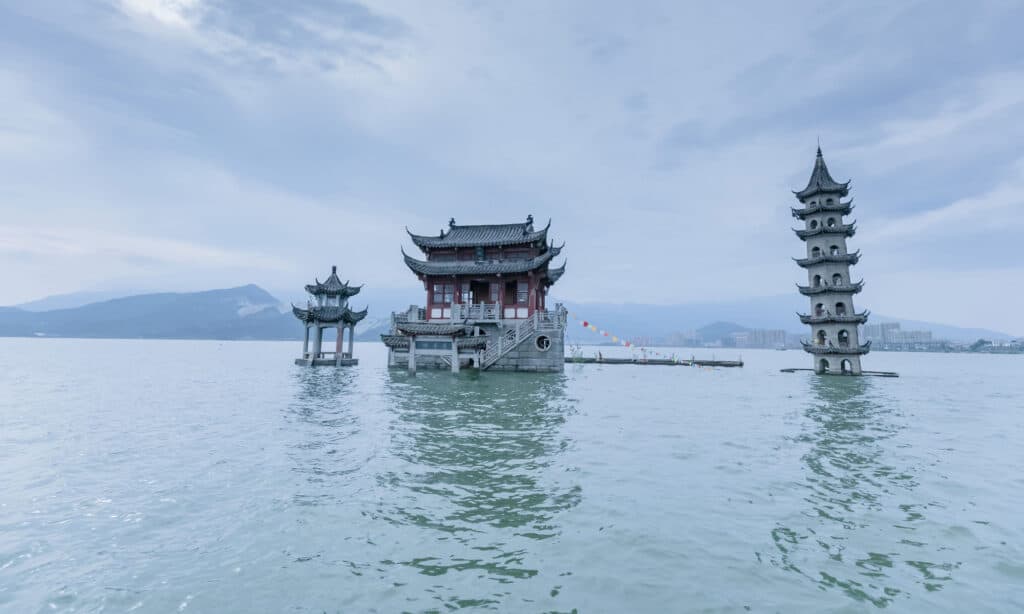
The water level in the Poyang floodplain fluctuates dramatically. However, the lake’s typical size averages 1,240 sq mi (3,210 km2).
©iStock.com/undefined undefined
Poyang-hu, located in Jiangxi Province, is China’s largest freshwater lake. The water level in the Poyang floodplain fluctuates dramatically. However, the lake’s typical size averages 1,240 sq mi (3,210 km2). The lake’s deepest point is 148 feet, with an average depth of 27.5 feet. Contamination of birds such as swans, geese, and ducks by agricultural pesticides, electrofishing, and siltation by local anglers to catch fish are the main issues of the lake.
11. Uvs Lake, Mongolia/Russia
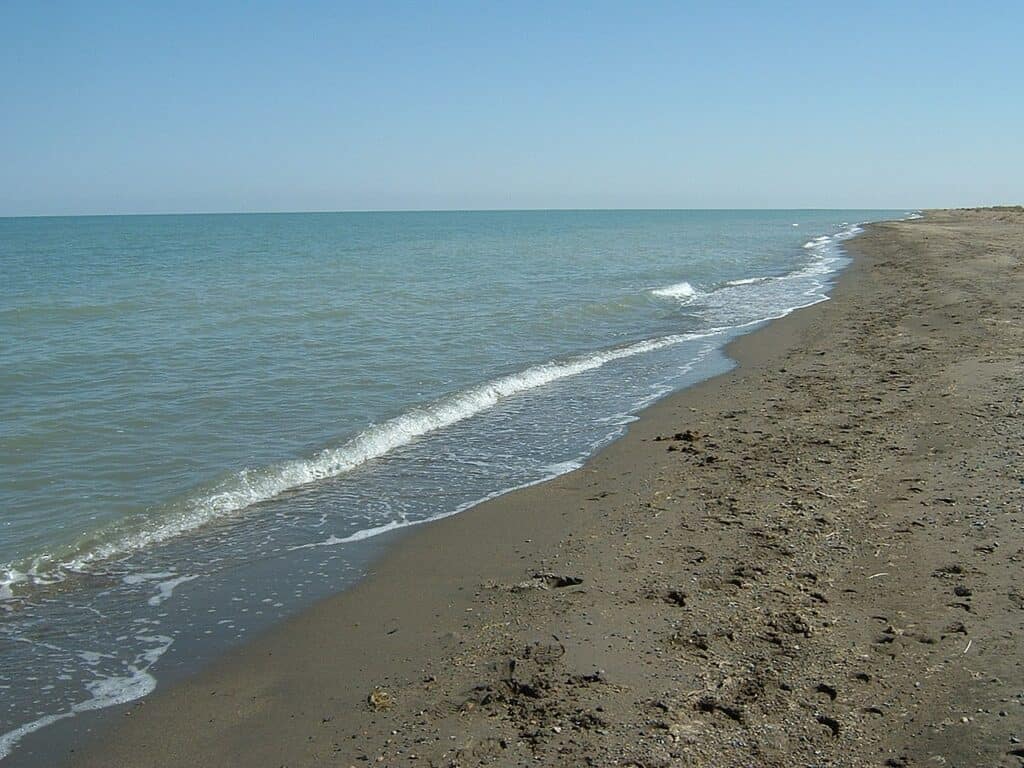
Covering an area of 1,290 square miles, Uvs Lake is the largest lake in Mongolia by surface area.
©Original uploader was Jan Sysel / Creative Commons – License
Uvs Lake is a severely saline lake in Mongolia’s Uvs Nuur Basin, including a tiny portion of Russia. It is Mongolia’s largest lake by surface area, comprising 1,290 square miles (3,350 km2). The lake’s salinity ranges from 3 to 35 g/l. Numerous migratory species use the area’s reed beds and freshwater river waterways as nesting and resting grounds. Uvs Lake has the coldest, warmest, and driest conditions compared to other locations on the planet at the same height.
10. Van Lake, Turkey
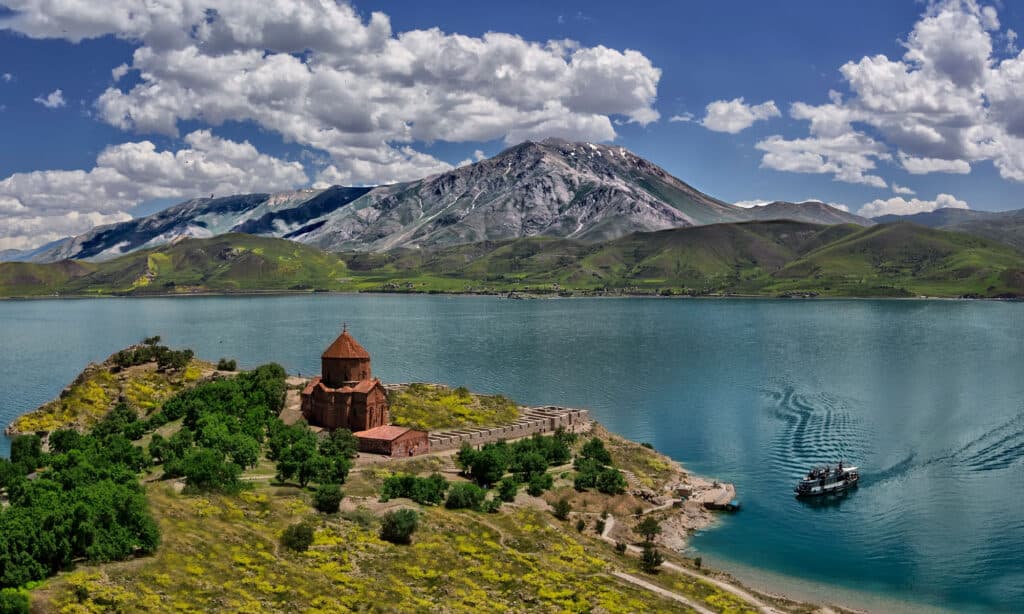
Spanning a surface area of 1,450 square miles, Van Lake emerges as the tenth biggest lake in Asia.
©iStock.com/Muhur
Van Lake is a saline soda lake lying in the Bitlis and Van provinces of Turkey, with 1,450 square miles (3,755 km2). The lake is located near the Iranian border in the highlands of Eastern Anatolia. Because of its excessive salinity, the water is unfit for drinking or irrigation, and only a few types of freshwater fish, such as Darekh, a herring species, can survive.
9. Sarygamysh Lake, Uzbekistan/Turkmenistan
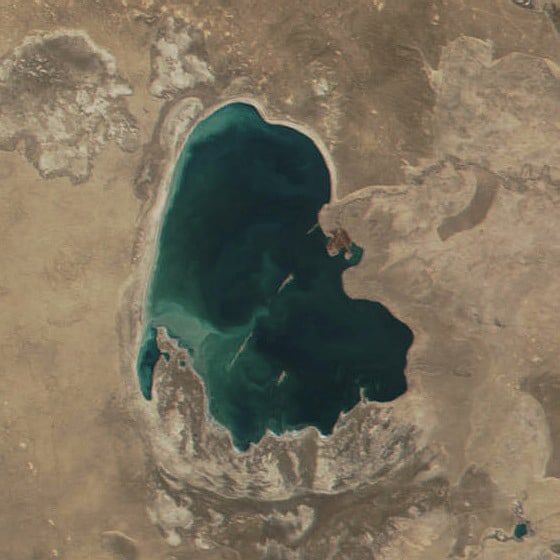
Located in Central Asia, the Sarygamysh Lake spans 1,527 square miles.
The Sarygamysh Lake, which spans 1,527 square miles (3,955 square kilometers), is located in Central Asia near the border between Uzbekistan and Turkmenistan. It is located halfway between the Caspian and Aral Seas. However, this and several other “unintended” lakes deprive the Aral Sea of around 36 cubic miles of yearly water intake. Sarygamysh Lake’s waters are heavily polluted, with vast levels of herbicides, heavy metals, and pesticides.
8. Lake Khanka, Russia/China

The pear-shaped Lake Khanka spans an area of 1,570 square miles, and it is roughly 56 miles long.
©Alexander Khitrov/Shutterstock.com
Lake Khanka is located between the Primorsky Krai area of Russia and the Heilongjiang province of Northeast China, on the China-Russia border. The pear-shaped lake is roughly 56 miles long and has a maximum width of 28 miles, spanning 1,570 square miles (4,070 km2. Numerous fish and marine invertebrate species, including several native species, can be found in the lake. Fish species include pike, the Amur catfish, common carp, and grass carp.
7. Qinghai Lake, China
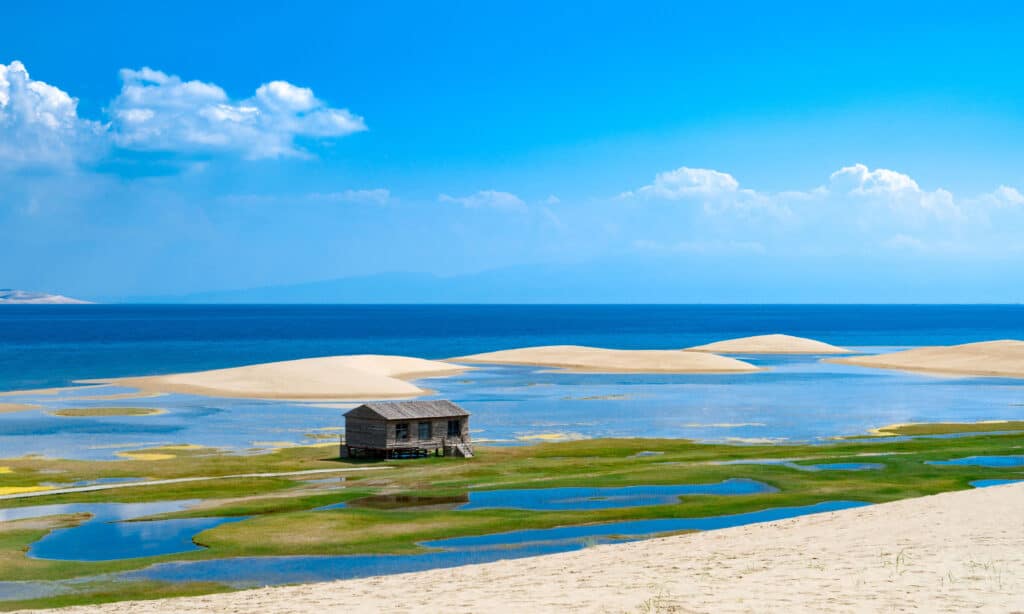
Qinghai Lake has a surface size of 1,754 square miles and is the largest lake in China.
©iStock.com/Liu Lei
China’s largest lake, Qinghai Lake, also known as Ch’inghai Lake, has a surface size of 1,754 square miles (4,543 km2). Many migrating birds use Qinghai as a stopover from Asia to Europe, feeding on the lake’s fish. The lake attracts around 10,000 birds throughout the summer months, making it a prime location for bird viewing. The lake’s area has changed multiple times over the years, and it has been diminishing for the majority of the twentieth century.
6. Lake Taymyr, Russia
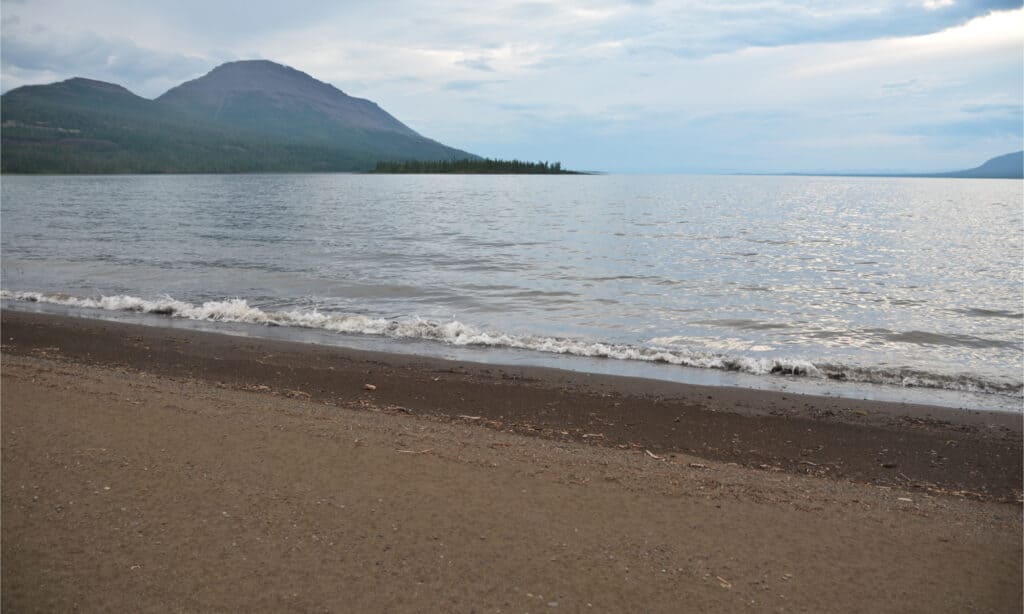
The very frigid Lake Taymyr never gets hotter than 46.4° Fahrenheit and its average temperature is 55.4° Fahrenheit.
©Sergei Drozd/Shutterstock.com
Lake Taymyr is located in Russia’s Taymyr Peninsula, south of the Byrranga Mountains. With a surface size of 1,760 square miles (4,560 km2), the Russian lake is the Arctic’s largest freshwater basin. As you may expect, this lake gets exceptionally frigid. It never gets hotter than 46.4° Fahrenheit and averages minus 55.4° Fahrenheit. Regardless, the lake is home to various fish species, including sigs, muksuns, loaches, and graylings. Phytoplankton in the water is a food source for some of the lake’s species.
5. Lake Urmia, Iran
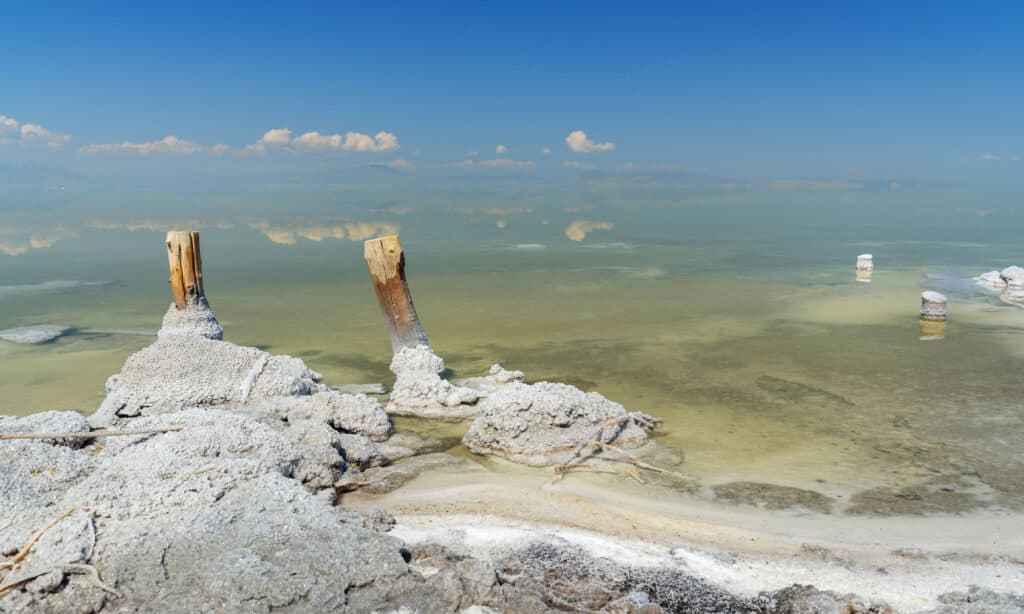
Asia’s fifth-largest lake, Lake Urmia is situated in the western region of Iran and covers an area of 2,000 square miles.
©iStock.com/Elena Odareeva
Lake Urmia, Asia’s fifth-largest lake, is situated in the western region of Iran and covers an area of 2,000 square miles (5,200 km2). It features around 100 islands, the largest of which are Bard and Shahi, which serve as resting spots for migrating birds. Due to the lack of outflows, the lake only dries by evaporation, and it has grown exceedingly saline. It’s also among the world’s largest tropical lakes. However, the lake has receded by 60%, and there is a serious possibility that it could vanish totally, with barely 5% of the water remaining today.
4. Lake Issyk-Kul, Kyrgyzstan

Although the Issyk-Kul Lake is surrounded by snow-capped mountains, it never freezes.
©iStock.com/Ozbalci
Issyk-Kul Lake, located in Kyrgyzstan, is Asia’s fourth-largest lake, with 2,408 sq mi (6,236 km2). Lake Issyk-Kul is an endorheic lake in eastern Kyrgyzstan’s Northern Tian Shan mountains. It is the world’s seventh-deepest lake, tenth-largest lake in terms of volume, and second-largest saline lake after the Caspian Sea. In the Kyrgyz language, Issyk-Kul means “warm lake.” This is because, despite its elevation, the lake never freezes. The average temperature in the area is minus 15 degrees Fahrenheit.
3. Lake Balkhash
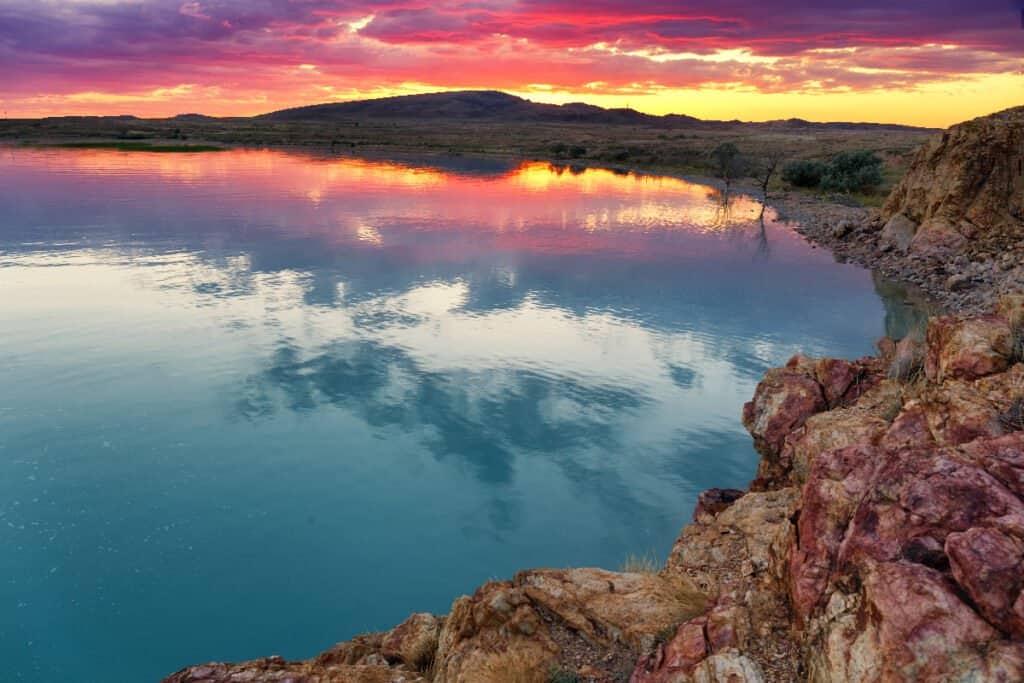
Covering an area of 6,332 square miles, Lake Balkhash is the 15th largest lake in the world and the 3rd largest lake in Asia.
©Maxim Petrichuk/Shutterstock.com
Lake Balkhash is the world’s 15th-largest lake and one of Asia’s largest. It is part of an endorheic (closed) basin in southeastern Kazakhstan, in the east of Central Asia. The lake has 6,332 square miles (16,400 km2), making it Kazakhstan’s largest lake. The lake’s distinctiveness originates because it is split in two by a small strait. Each has distinct water compositions: the western portion is virtually fresh, while the eastern part is brackish. The lake and Lake Alakol watershed basins are home to the Balkhash perch. It has a thinner construction and a lighter hue than the others, yet it grows to the same size as the others.
2. Lake Baikal, Russia
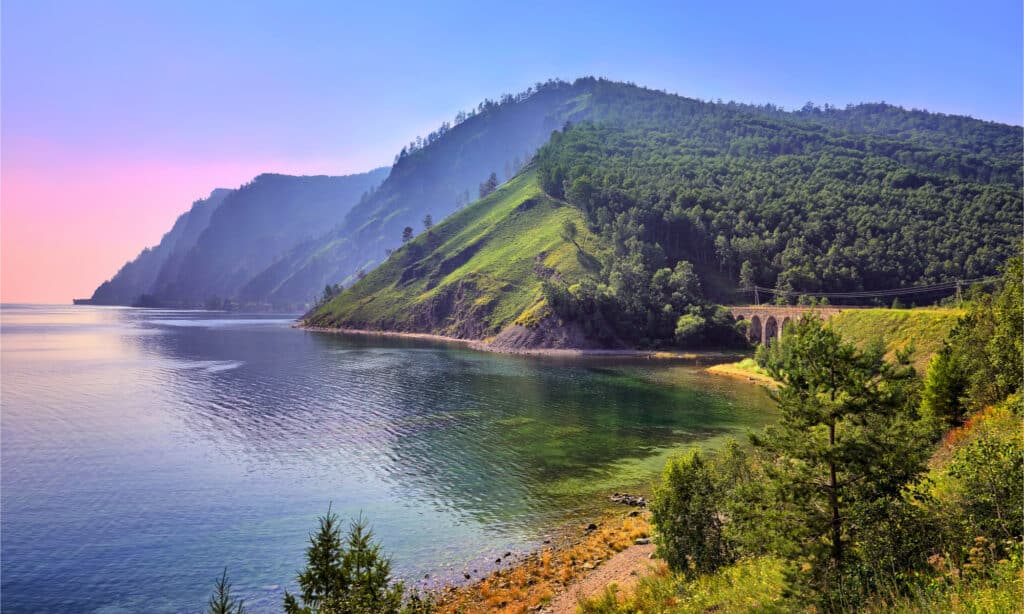
Lake Baikal is the deepest lake in the world with a depth of 1642m.
©Nikitin Victor/Shutterstock.com
One of the most famous lakes in the world owing to its incredibly deep depths, Lake Baikal is also the second-largest lake in Asia, covering a surface area of 12,248 square miles (31,722 km2). Lake Baikal, located in Siberia and formed in an ancient rift valley, is the world’s biggest freshwater lake, containing more than 20% of the world’s unfrozen freshwater, even more than all of the water in the Great Lakes of North America combined. This massive and tremendously deep lake also happens to have the clearest waters of any lake on the planet.
As if that wasn’t enough, Lake Baikal has been estimated to be 25 million years old, making it the world’s oldest lake. The underwater visibility of Lake Baikal is 98 to 131 feet, so if you sail above its waters in a boat, you can observe the lake’s magnificent environment! This ecosystem comprises sediment-eating plankton that keeps the lake pure by consuming sediments and other minerals. The lake’s portion would be clearer if the plankton population were higher.
This UNESCO World Heritage Site also has a diverse environment. The lake is home to 60 native fish species, 236 different bird species, 2,500 different mammals, 1,000 plant variations, and the Baikal seal, a freshwater seal population. The Baikal seal is the only pinniped that only inhabits freshwater environments.
1. Caspian Sea
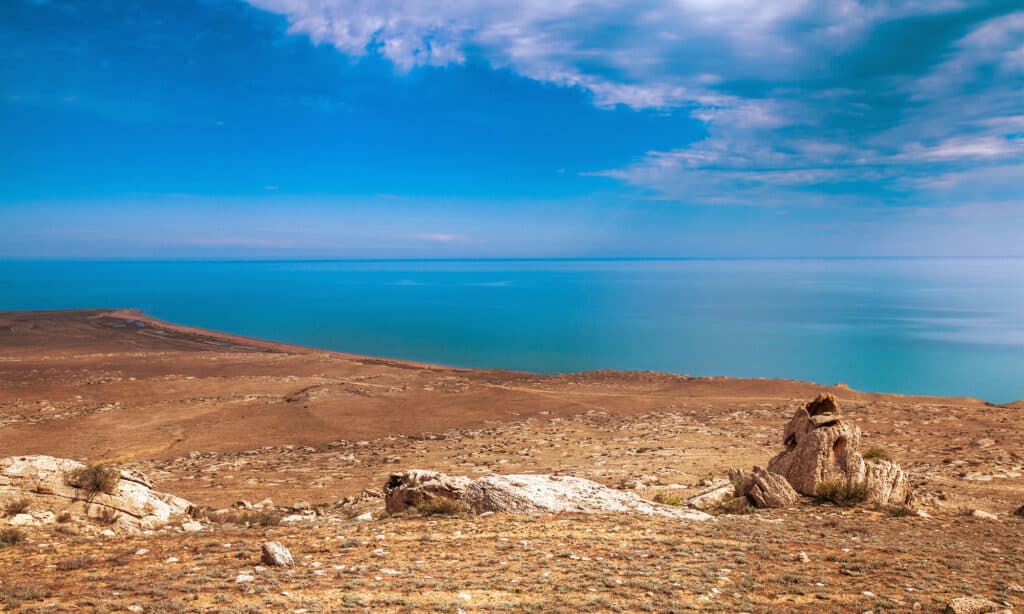
The biggest lake in Asia is the Caspian Sea.
©Marina Khlybova/Shutterstock.com
Although called a sea, the Caspian Sea is actually a lake – the biggest in Asia and in the whole world, in fact! Apart from its vast surface area, the lake also features high salinity, making it even closer to a sea than a lake. Because of its immensity, covering 143,000 square miles (371,000 km²), the lake has shorelines in numerous countries, including Kazakhstan, Russia, Iran, Turkmenistan, and Azerbaijan. This lake’s water is brackish in places and has a high salinity, although it’s not as bad as an ocean.
Summary of the 15 Biggest Lakes in Asia
Here is a summary of the 15 biggest lakes in Asia:
| Rank | Lake | Size |
|---|---|---|
| 1. | Caspian Sea | 143,000 square miles |
| 2. | Lake Baikal, Russia | 12,248 square miles |
| 3. | Lake Balkhash | 6,332 square miles |
| 4. | Lake Issyk-Kul, Kyrgyzstan | 2,408 square miles |
| 5. | Lake Urmia, Iran | 2,000 square miles |
| 6. | Lake Taymyr, Russia | 1,760 square miles |
| 7. | Qinghai Lake, China | 1,754 square miles |
| 8. | Lake Khanka, Russia/China | 1,570 square miles |
| 9. | Sarygamysh Lake, Uzbekistan/Turkmenistan | 1,527 square miles |
| 10. | Van Lake, Turkey | 1,450 square miles |
| 11. | Uvs Lake, Mongolia/Russia | 1,290 square miles |
| 12. | Poyang Lake, China | 1,240 square miles |
| 13. | Dongting Lake, China | 1,090 square miles |
| 14. | Khövsgöl Lake, Mongolia | 1,070 square miles |
| 15. | Tonlé Sap, Cambodia | 1,000 square miles |
The photo featured at the top of this post is © iStock.com/Liu Lei
Thank you for reading! Have some feedback for us? Contact the AZ Animals editorial team.






